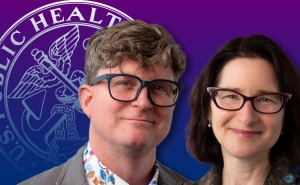New Study Examines the Processes Behind the Prioritization of Global Health Issues
Why are some health issues prioritized while others are neglected?
What determines whether a global health issue is neglected or given attention and resources? Researchers in the Department of International Health at the Johns Hopkins Bloomberg School of Public Health analyzed how framing contributes to the level of priority certain health issues receive. The researchers identified three primary framing processes that influence which health issues are prioritized in global health, and they offer ways to make the priority-setting process fairer and more transparent.
What is framing?
Social scientists use the concepts of frames and framing in several ways. For purposes of their study, the researchers defined frames as the ways individuals and organizations understand and portray public issues and framing processes as the mechanisms people or groups use to advance their preferred frames, including the strategies and forms of power that they deploy. Whether a particular frame gains acceptance depends not just on the content of the frame, but also on the legitimacy and authority of those who promote it and the belief systems of target audiences.
Three framing processes
Jeremy Shiffman, Bloomberg Distinguished Professor, and Yusra Shawar, assistant scientist in the Department of International Health at the Bloomberg School, describe three framing processes that actors commonly used to bring priority to particular health issues: securitization, moralization, and technification.
Securitization involves framing a particular issue as an imminent threat with the likely potential of affecting humanity as a whole. These issues are presented as needing an immediate, coordinated international response. Actors that advocate for issues with a security frame are often leaders of powerful states—most often those from high-income countries—along with international organizations, such as the WHO. Examples of health issues that have been securitized are Ebola and pandemic influenza (such as H1N1).
Moralization involves the depiction of a health issue as an ethical imperative that humanity has a responsibility to solve, most often as a matter of social justice and human rights. Actors utilize claims to moral authority to advance prioritization of health issues. Those who advocate for issues with an ethical imperative frame are often civil society organizations, grass-roots activists, and some international organizations. Examples of health issues that have been advanced with an ethical imperative frame include HIV/AIDS and disability rights.
Technification involves the portrayal of a health issue as one that experts using science and technology can solve. The case is often made that addressing these health issues is cost-effective and a likely good return on investment. Those who advocate for issues with a wise investment frame are often experts in various fields of science, such as biomedical scientists, medical doctors and epidemiologists. Examples of issues that have been advanced with a wise investment frame are neglected tropical diseases and newborn survival.
How can the prioritization process be made fairer?
Elites—those with disproportionate control over resources such as money, government power, cultural influence, and knowledge—often dominate global health framing, thereby shaping which issues receive attention and resources They often work in private philanthropic foundations, academic institutions, international organizations, and donor agencies. These elites commonly encounter social resistance as they seek to promote their preferred frames. This imbalance of power raises questions about the legitimacy of priority-setting.
“Often the concerns of high-income countries trump those of low-income countries, as elites in high-income settings are able to control the framing of a particular issue,” says Shiffman. Objective characteristics of health issues—such as the mortality they cause and the availability of cost-effective interventions—are also influential, but do not fully determine priority levels, the researchers found.
“It’s interesting to note that the ascription of an issue as a security concern, ethical imperative or wise investment is historically contingent,” Shiffman adds. “Such an ascription might be applied to one issue but not another one of similar type and equal burden. Why, for instance, is access to antiretroviral treatment for HIV/AIDS widely considered to be an ethical imperative, but not access to insulin for the treatment of diabetes?”
Shiffman and Shawar suggest two ways to make global health priority-setting processes fairer:
- Ensure that these processes are inclusive and that they create accountability for performance: meaning, institutions that make decisions should do so transparently and be subject to checks by those affected by their decisions.
- Advocates for single issues should proceed cautiously. Single-issue advocacy can often come at the expense of other health issues that are equally deserving of resources but might not have an organized group of actors that advocate for those issues. Advocates should therefore proceed with a mindset towards larger aspirations for global health equity, guarding against actions that might have adverse effects on the prioritization of other health issues.
Framing and the formation of global health priorities was published in The Lancet on May 17, 2022. It was included as part of a special issue on political science and health.





